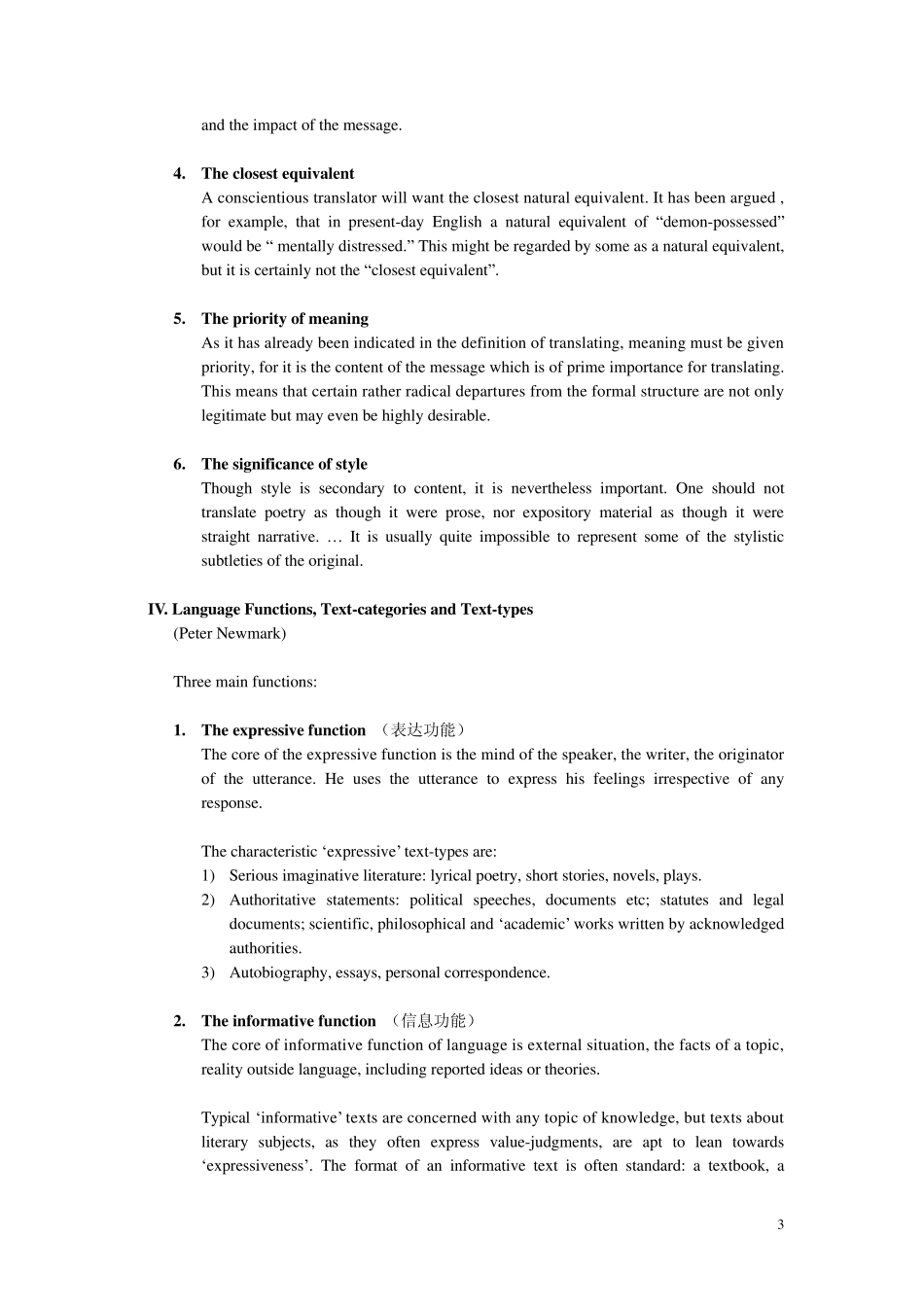1 Some Basic Concepts of Translation I.Some controversial issues: 1. literal translation vs. free translation 直译还是意译 2. functional equivalence vs. formal correspondence 功能对等还是形式对应 3. content vs. form 重内容还是重形式 4. source-oriented vs. target-oriented 靠近原语还是靠近译入语 5. author-centered vs. reader-centered 以原作者为中心还是以译入语读者为中心 6. the purpose of the author vs. the purpose of the translator 原作者写作的目的还是译者翻译的目的 II.THE METHODS (Peter Newmark) 1. Word-for-w ord translation (逐字翻译) This is often demonstrated as interlinear translation, with the TL immediately below the SL words. The SL word-order is preserved and the words translated singly by their most common meanings, out of context. Cultural words are translated literally. The main use of word-for-word translation is either to understand the mechanics of the source language or to construe a difficult text as a pre-translation process. 2. Literal translation (直译) The SL grammatical constructions are converted to their nearest TL equivalents but the lexical words are again translated singly, out of context. As a pre-translation process, this indicates the problems to be solved. 3. Faithful translation (忠实翻译) A faithful translation attempts to reproduce the precise contextual meaning of the original within the constraints of the TL grammatical structures. It „transfers‟ cultural words and preserves the degree of grammatical and lexical „abnormality‟ (deviation from SL norms) in the translation. It attempts to be completely faithful to the intentions and the text-realisation of the SL writer. 4. Semantic translation (语义翻译) Semantic translation differs from „faithful translation‟ only in as far as it ...


